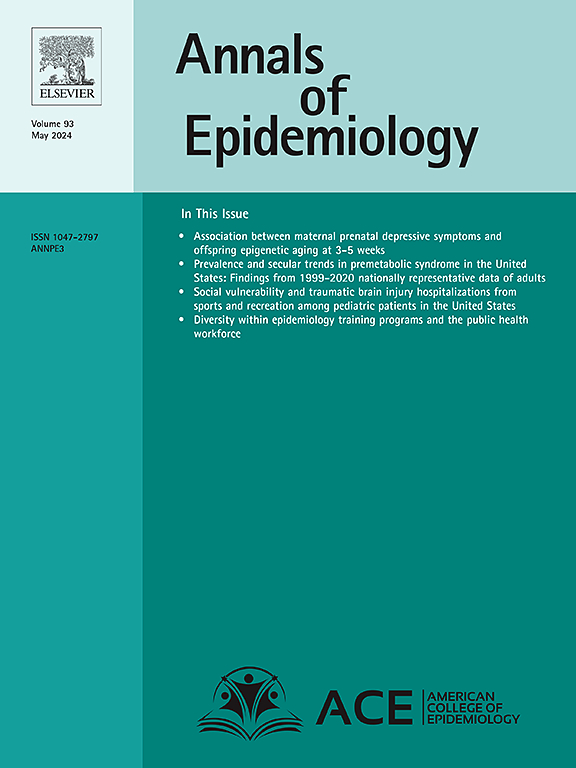Maternal asthma in pregnancy and pubertal timing in daughters and sons: A population-based cohort study
IF 3.3
3区 医学
Q1 PUBLIC, ENVIRONMENTAL & OCCUPATIONAL HEALTH
引用次数: 0
Abstract
Purpose
We investigated the impact of maternal asthma on children’s pubertal timing as it remains underexplored.
Methods
The Danish National Birth Cohort (DNBC) provided information on maternal asthma during pregnancy, supplemented with diagnosis codes from the Danish National Patient Register. The DNBC sub-cohort the Puberty Cohort gave half-yearly information on pubertal timing from 11 years. We estimated adjusted mean age differences in months for reaching Tanner Stages 1–5 for breast, genital and pubic hair development, axillary hair, acne, and voice break, and menarche for daughters, and first ejaculation for sons. Further, a negative control analysis explored confounding, and two mediation analyses explored mediation through birthweight and childhood asthma.
Results
In total, 15,819 children and their mothers participated and 6.6 % of the children had mothers with asthma. Results indicated slightly later pubertal development in sons of mothers with asthma (average difference: 1.0 months (95 % confidence intervals −0.4, 2.4)). This association was not mediated by birthweight or childhood asthma. We did not observe any associations among daughters. The negative control analysis suggested some confounding towards the null.
Conclusion
Sons of mothers with asthma during pregnancy had slightly later pubertal timing, though the result could also indicate no association.
母亲妊娠期哮喘与女儿和儿子的青春期:一项基于人群的队列研究
目的探讨母亲哮喘对儿童青春期发育时间的影响。方法丹麦国家出生队列(Danish National Birth Cohort, DNBC)提供孕妇妊娠期间哮喘的信息,并辅以丹麦国家患者登记册的诊断代码。DNBC亚组,青春期组,每半年提供11年的青春期时间信息。我们估计了达到Tanner阶段1-5的调整后的平均年龄差异,包括乳房、生殖器和阴毛发育、腋毛、痤疮和声音破裂、女儿月经初潮和儿子第一次射精。另外,一项负性对照分析探讨了混淆因素,两项中介分析探讨了出生体重与儿童哮喘的中介作用。结果共有15819名儿童及其母亲参与调查,6.6 %的儿童母亲患有哮喘。结果显示哮喘母亲的儿子的青春期发育略晚(平均差异:1.0个月(95 %置信区间- 0.4,2.4))。这种关联与出生体重或儿童哮喘无关。我们没有观察到女儿之间有任何关联。阴性对照分析表明有一些对零的混淆。结论妊娠期哮喘母亲的儿子的青春期发育时间稍晚,但结果也可能表明两者之间没有关联。
本文章由计算机程序翻译,如有差异,请以英文原文为准。
求助全文
约1分钟内获得全文
求助全文
来源期刊

Annals of Epidemiology
医学-公共卫生、环境卫生与职业卫生
CiteScore
7.40
自引率
1.80%
发文量
207
审稿时长
59 days
期刊介绍:
The journal emphasizes the application of epidemiologic methods to issues that affect the distribution and determinants of human illness in diverse contexts. Its primary focus is on chronic and acute conditions of diverse etiologies and of major importance to clinical medicine, public health, and health care delivery.
 求助内容:
求助内容: 应助结果提醒方式:
应助结果提醒方式:


